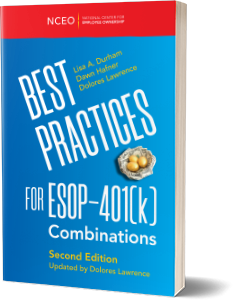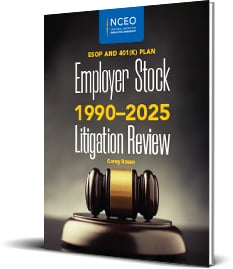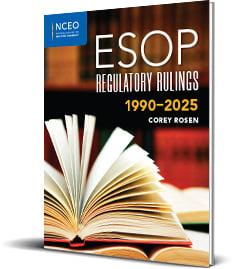Featured Publications
Best Practices for ESOP-401(k) Combinations, 2nd Ed.
Updated coverage of the issues that arise when a company sponsors both an ESOP and a 401(k) plan.

Featured Publications
ESOP and 401(k) Plan Employer Stock Litigation Review 1990-2025
Categorizes and summarizes litigation over company stock in ESOPs and 401(k) plans.

Featured Publications
ESOP Regulatory Rulings 1990-2025
Categorizes and summarizes IRS and DOL rulings and regulations on ESOPs and related plans.

Featured Publications
Creating a Sustainable ESOP Distribution Policy
This new book explains how to manage distributions with sustainability in mind.









































